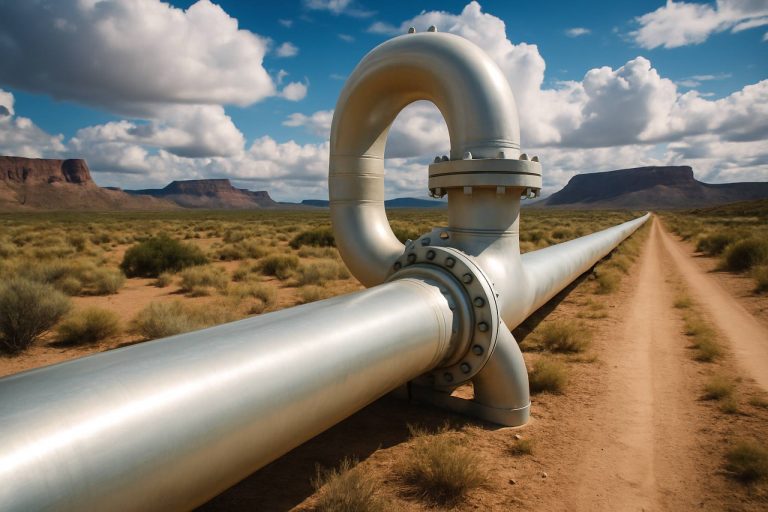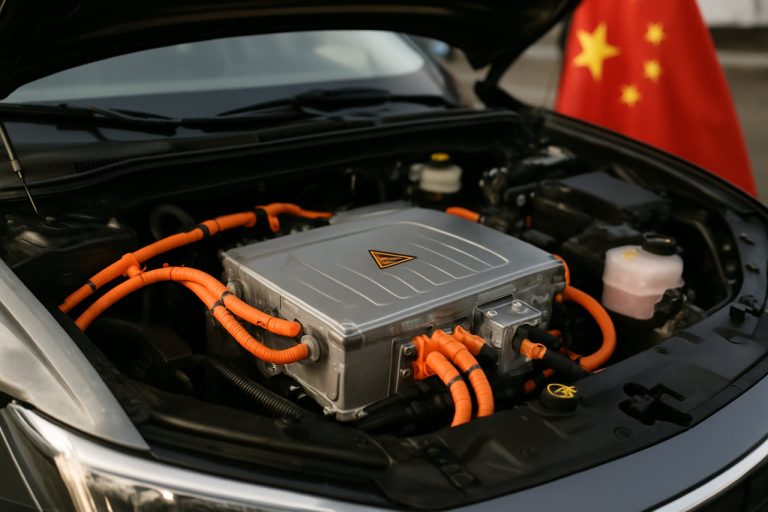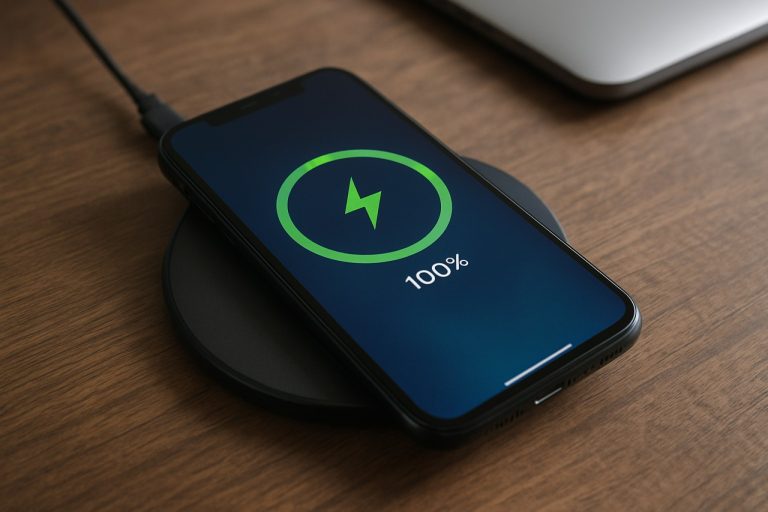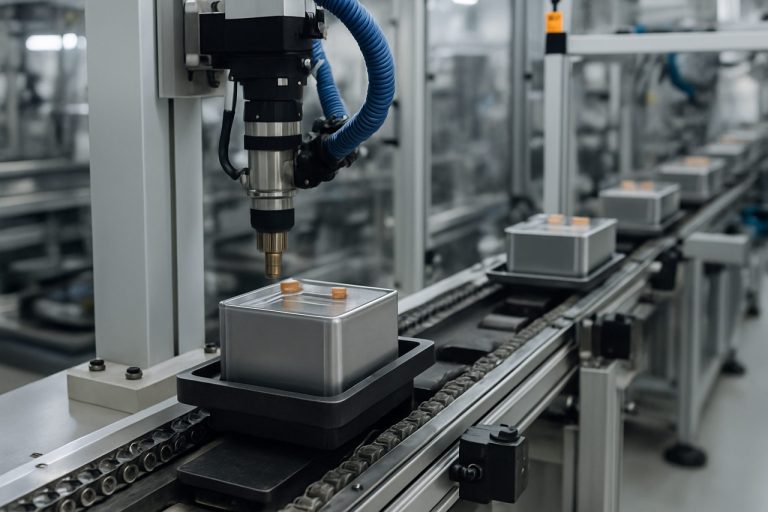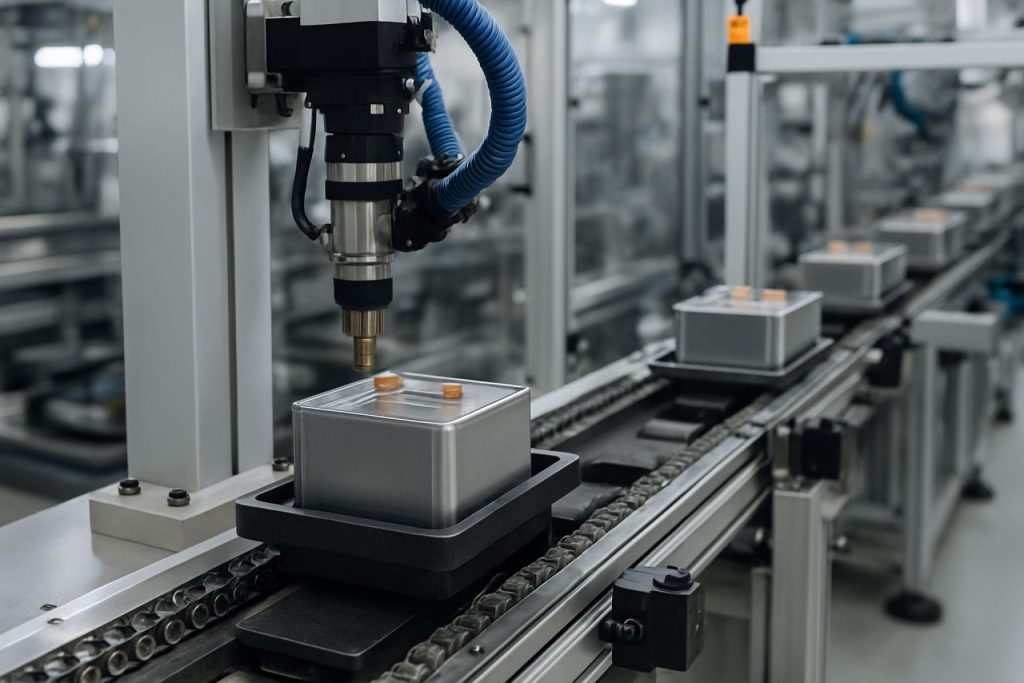
Battery Cell Manufacturing Equipment in 2025: How Automation, Global Investments, and Next-Gen Technologies Are Shaping the Future of Energy Storage. Explore the Key Trends, Market Forecasts, and Strategic Shifts Powering the Industry Forward.
- Executive Summary: 2025 Market Overview & Key Takeaways
- Market Size, Growth Rate & Forecasts (2025–2030)
- Major Players & Competitive Landscape (e.g., wirtzusa.com, manz.com, hitachi-hightech.com)
- Technological Innovations: Automation, AI, and Digital Twins
- Gigafactory Expansion & Regional Hotspots
- Supply Chain Dynamics & Raw Material Sourcing
- Sustainability Initiatives & Energy Efficiency in Equipment
- Emerging Battery Chemistries and Their Impact on Equipment Design
- Investment Trends, M&A Activity, and Strategic Partnerships
- Future Outlook: Challenges, Opportunities, and Industry Roadmap
- Sources & References
Executive Summary: 2025 Market Overview & Key Takeaways
The global market for battery cell manufacturing equipment is poised for robust growth in 2025, driven by surging demand for lithium-ion batteries across electric vehicles (EVs), energy storage systems, and consumer electronics. As governments and industries accelerate electrification and decarbonization efforts, battery manufacturers are scaling up production capacities, fueling significant investments in advanced manufacturing equipment. The sector is characterized by rapid technological innovation, automation, and the emergence of new players alongside established equipment suppliers.
Key industry leaders such as Hitachi High-Tech Corporation, Manz AG, Wuxi Lead Intelligent Equipment Co., Ltd., and TESVOLT AG are expanding their portfolios to address the evolving needs of battery gigafactories. Wuxi Lead Intelligent Equipment, for example, has become a dominant supplier of turnkey solutions for electrode manufacturing, cell assembly, and formation systems, serving both Chinese and international battery producers. Manz AG continues to innovate in high-speed, automated production lines, supporting European battery initiatives and collaborations with automotive OEMs.
In 2025, the market is witnessing a shift toward highly automated, digitalized equipment to improve yield, reduce costs, and ensure quality at scale. The integration of artificial intelligence, machine vision, and data analytics is becoming standard in new installations. Equipment suppliers are also responding to the diversification of cell chemistries—such as LFP, NMC, and emerging solid-state technologies—by developing flexible machinery capable of handling multiple formats and materials.
Geographically, Asia-Pacific remains the epicenter of battery cell manufacturing equipment demand, led by China, South Korea, and Japan. However, significant capacity expansions in Europe and North America—driven by initiatives like the European Battery Alliance and the U.S. Inflation Reduction Act—are creating new opportunities for local and global equipment suppliers. Companies such as Hitachi High-Tech Corporation and Manz AG are actively involved in these regional expansions, supplying advanced equipment to new gigafactories.
Looking ahead, the outlook for battery cell manufacturing equipment in 2025 and the following years is highly positive. The market is expected to benefit from continued investment in gigafactory construction, ongoing innovation in battery technology, and the global push for electrification. Equipment suppliers with strong R&D capabilities, global service networks, and the ability to deliver integrated, automated solutions are well-positioned to capture growth in this dynamic sector.
Market Size, Growth Rate & Forecasts (2025–2030)
The global market for battery cell manufacturing equipment is poised for robust expansion from 2025 through 2030, driven by surging demand for lithium-ion batteries in electric vehicles (EVs), energy storage systems, and consumer electronics. As automakers and energy companies accelerate their electrification strategies, the need for advanced, high-throughput, and automated manufacturing lines is intensifying. Major battery producers and equipment suppliers are scaling up investments to meet both capacity and technological requirements.
In 2025, the market size for battery cell manufacturing equipment is estimated to be in the multi-billion-dollar range, with leading industry players reporting significant order backlogs and new project announcements. For example, Wuxi Lead Intelligent Equipment Co., Ltd., one of the world’s largest battery equipment manufacturers, has reported rapid growth in both domestic and international orders, supplying turnkey solutions for cell assembly, formation, and module/pack lines. Similarly, MAN Energy Solutions and Sovema Group (a subsidiary of Dürr AG) are expanding their portfolios to include highly automated electrode production and cell assembly systems, targeting gigafactory-scale projects in Europe and North America.
The growth rate for the sector is expected to remain in the double digits annually through 2030, reflecting both greenfield gigafactory construction and brownfield upgrades. The European market, in particular, is witnessing accelerated investment, with companies such as Comau and Siemens AG providing automation, digitalization, and process control solutions tailored for battery cell manufacturing. In Asia, established equipment suppliers like Hitachi High-Tech Corporation and Shimadzu Corporation are innovating in precision coating, calendaring, and inspection systems to support next-generation cell chemistries and formats.
Looking ahead, the market outlook is underpinned by announced gigafactory projects from major battery manufacturers such as Contemporary Amperex Technology Co. Limited (CATL), LG Energy Solution, and Panasonic Corporation, all of which are investing in state-of-the-art manufacturing lines. Equipment suppliers are responding with innovations in AI-driven quality control, energy-efficient processes, and modular line designs to enable rapid scaling and flexibility. As a result, the battery cell manufacturing equipment market is expected to reach new highs by 2030, with sustained growth supported by the global transition to electrification and renewable energy integration.
Major Players & Competitive Landscape (e.g., wirtzusa.com, manz.com, hitachi-hightech.com)
The battery cell manufacturing equipment sector is experiencing rapid expansion and intensifying competition as global demand for lithium-ion batteries accelerates, driven by electric vehicles (EVs), energy storage, and consumer electronics. In 2025 and the coming years, the competitive landscape is shaped by established industrial equipment manufacturers, specialized battery technology firms, and new entrants investing in automation, digitalization, and sustainability.
Among the most prominent players is Manz AG, a German engineering company with a strong focus on automation and digital production solutions for lithium-ion battery cell and module manufacturing. Manz AG’s portfolio covers the entire value chain, including electrode production, cell assembly, and module packaging. The company has secured major contracts with automotive OEMs and battery producers in Europe and Asia, reflecting its reputation for high-precision, scalable equipment.
Another key player is Hitachi High-Tech Corporation, a subsidiary of Hitachi, Ltd., which supplies advanced inspection, measurement, and process equipment for battery cell manufacturing. Hitachi High-Tech leverages its expertise in metrology and quality control to address the growing need for defect detection and process optimization in gigafactories. The company is expanding its global footprint, particularly in Asia and North America, to support the surge in battery plant construction.
In the United States, Wirtz Manufacturing Co., Inc. stands out as a long-established supplier of battery manufacturing equipment, with a legacy in both lead-acid and lithium-ion technologies. Wirtz provides turnkey solutions for cell production, including mixing, coating, and formation systems, and is increasingly involved in supporting the transition to advanced chemistries and high-throughput automation.
Other notable competitors include Comau, an Italian automation specialist delivering flexible assembly lines for battery modules and packs, and Sovema Group, which offers a comprehensive range of machinery for electrode processing and cell assembly. Asian firms such as Toray Industries, Inc. and Shimadzu Corporation are also expanding their presence, leveraging material science and precision engineering capabilities.
The competitive landscape is further shaped by strategic partnerships, joint ventures, and technology licensing agreements, as manufacturers race to meet the scale, speed, and quality requirements of next-generation battery plants. With gigafactory investments accelerating in Europe, North America, and Asia, the outlook for battery cell manufacturing equipment providers remains robust, with innovation in automation, digital twins, and sustainability practices expected to be key differentiators through 2025 and beyond.
Technological Innovations: Automation, AI, and Digital Twins
The battery cell manufacturing equipment sector is undergoing rapid transformation in 2025, driven by the integration of automation, artificial intelligence (AI), and digital twin technologies. These innovations are reshaping production lines, enhancing efficiency, and enabling higher quality standards to meet the surging global demand for lithium-ion and next-generation battery cells.
Automation remains at the core of modern battery cell manufacturing. Leading equipment suppliers such as Siemens and Bosch are delivering advanced robotics and process automation solutions that streamline electrode production, cell assembly, and formation processes. Automated guided vehicles (AGVs), robotic arms, and vision systems are now standard in new gigafactories, reducing human error and increasing throughput. For example, Comau, a subsidiary of Stellantis, provides fully automated assembly lines for battery modules and packs, emphasizing flexibility and scalability for evolving cell formats.
AI-driven process control is another major trend. By leveraging machine learning algorithms, manufacturers can monitor and optimize critical parameters in real time, such as slurry mixing, coating uniformity, and electrolyte filling. Siemens and ABB are integrating AI into their manufacturing execution systems (MES), enabling predictive maintenance and adaptive process adjustments. This reduces downtime and improves yield, which is crucial as cell chemistries diversify and tolerances tighten.
Digital twin technology is gaining traction as a powerful tool for virtualizing and optimizing battery cell production. Companies like Siemens and Dürr offer digital twin platforms that create real-time, data-driven replicas of manufacturing lines. These digital twins allow engineers to simulate process changes, test new equipment configurations, and predict the impact of parameter adjustments before implementation on the shop floor. This approach accelerates commissioning, reduces costly trial-and-error, and supports continuous improvement.
Looking ahead, the convergence of automation, AI, and digital twins is expected to further reduce production costs and energy consumption, while supporting the scale-up of new battery chemistries such as solid-state and sodium-ion. Equipment manufacturers are also focusing on modular, reconfigurable systems to accommodate rapid shifts in cell design and market demand. As gigafactories proliferate across Europe, North America, and Asia, the adoption of these technologies is set to become a competitive necessity, with industry leaders like Siemens, Bosch, ABB, and Dürr at the forefront of this technological evolution.
Gigafactory Expansion & Regional Hotspots
The rapid expansion of gigafactories worldwide is driving unprecedented demand for advanced battery cell manufacturing equipment in 2025 and the coming years. As electric vehicle (EV) adoption accelerates and energy storage systems proliferate, manufacturers are scaling up production capacities, with a particular focus on automation, precision, and throughput. This surge is most pronounced in regions such as East Asia, Europe, and North America, where both established players and new entrants are investing heavily in state-of-the-art equipment to support next-generation lithium-ion and emerging chemistries.
In East Asia, companies like Contemporary Amperex Technology Co., Limited (CATL) and LG Energy Solution continue to lead in gigafactory scale and equipment procurement. These firms are not only expanding their own facilities but also driving demand for equipment from leading suppliers such as Wuxi Lead Intelligent Equipment, a global leader in lithium battery manufacturing machinery, and Shanghai Macrolink. Their equipment portfolios cover the full process chain, including electrode production, cell assembly, formation, and testing, with increasing integration of AI-driven quality control and digitalization.
Europe is emerging as a key regional hotspot, with gigafactory projects from Northvolt, Automotive Cells Company (ACC), and Verkor fueling demand for localized equipment supply and technology transfer. European equipment manufacturers such as Manz AG and Sovema Group are scaling up to meet these needs, focusing on modular, flexible systems that can adapt to evolving cell formats and chemistries. The push for regional supply chains is also prompting collaborations between European gigafactories and Asian equipment specialists.
In North America, the expansion of facilities by Tesla, Panasonic, and General Motors (through Ultium Cells) is spurring investments in both imported and domestically produced manufacturing equipment. U.S.-based suppliers such as Piacenza and Precision Automation are increasingly involved in the supply chain, while Asian giants continue to play a major role in providing high-throughput, automated lines.
Looking ahead, the outlook for battery cell manufacturing equipment is robust, with global gigafactory capacity projected to more than double by 2030. Equipment suppliers are responding with innovations in process automation, digital twins, and sustainability features such as solvent recovery and energy efficiency. As regional hotspots compete for leadership, the interplay between local content requirements, technology partnerships, and supply chain resilience will shape the next phase of equipment demand and deployment.
Supply Chain Dynamics & Raw Material Sourcing
The supply chain dynamics for battery cell manufacturing equipment in 2025 are shaped by rapid global expansion of gigafactories, intensifying competition for advanced machinery, and evolving strategies for raw material sourcing. As electric vehicle (EV) and energy storage demand accelerates, manufacturers are scaling up production capacity, driving robust demand for specialized equipment such as electrode coaters, calendering machines, cell assembly lines, and formation/testing systems.
Key equipment suppliers—including Wuxi Lead Intelligent Equipment, MAN Energy Solutions, Sovema Group, and Hitachi High-Tech Corporation—are expanding their global footprints and production capabilities to meet surging orders from battery manufacturers. Wuxi Lead Intelligent Equipment, for example, has established itself as a leading supplier of turnkey lithium-ion battery production lines, serving major cell makers in Asia, Europe, and North America. Sovema Group continues to supply both lithium-ion and lead-acid battery equipment, with a focus on automation and digitalization to improve throughput and quality.
Supply chain resilience is a top priority in 2025, as manufacturers seek to mitigate risks from geopolitical tensions, logistics bottlenecks, and raw material price volatility. Equipment makers are increasingly localizing production and sourcing, particularly in Europe and North America, to support regional battery initiatives and reduce dependence on Asian imports. For instance, MAN Energy Solutions and Hitachi High-Tech Corporation are investing in local service centers and partnerships to ensure timely delivery and support for gigafactory projects outside Asia.
Raw material sourcing for battery cell manufacturing equipment itself—such as high-grade steel, precision electronics, and specialty coatings—faces its own set of challenges. The industry is responding by diversifying suppliers, increasing inventory buffers, and investing in recycling and circular economy initiatives to secure critical inputs. Additionally, the push for sustainability is prompting equipment manufacturers to adopt greener production processes and materials, aligning with the environmental goals of their battery manufacturing customers.
Looking ahead, the outlook for battery cell manufacturing equipment supply chains remains dynamic. The sector is expected to see continued investment in automation, digital twins, and AI-driven process optimization, further increasing the complexity and value of equipment supplied. Strategic partnerships between equipment makers and battery producers are likely to deepen, with joint ventures and co-development projects aimed at accelerating innovation and securing long-term supply. As the global battery ecosystem matures, supply chain agility and raw material security will remain central to the competitiveness of equipment manufacturers.
Sustainability Initiatives & Energy Efficiency in Equipment
Sustainability and energy efficiency are increasingly central to the development and deployment of battery cell manufacturing equipment in 2025 and the coming years. As global demand for lithium-ion and next-generation batteries accelerates, manufacturers are under mounting pressure to reduce the environmental footprint of both their products and production processes. This is driven by regulatory requirements, customer expectations, and the strategic goals of major battery producers and equipment suppliers.
Leading battery equipment manufacturers are investing in technologies that minimize energy consumption, reduce waste, and enable circularity. For example, Wirtgen Group, a key supplier of mixing and coating equipment, has introduced process optimizations that lower thermal energy requirements during electrode production. Similarly, Manz AG has developed highly automated assembly lines that integrate energy recovery systems and advanced process controls, resulting in significant reductions in electricity and compressed air usage.
In 2025, sustainability initiatives are also being shaped by the adoption of digitalization and Industry 4.0 principles. Equipment providers such as Siemens AG are offering digital twins and real-time monitoring solutions that allow battery manufacturers to optimize energy use, predict maintenance needs, and minimize downtime. These digital tools not only improve operational efficiency but also support the traceability of materials and emissions throughout the manufacturing process.
Water usage and solvent recovery are additional focal points. Companies like Bühler Group are engineering solvent recovery systems for electrode coating lines, enabling the recapture and reuse of NMP (N-Methyl-2-pyrrolidone), a common but hazardous solvent. This reduces both environmental impact and operational costs. Furthermore, equipment is being designed for compatibility with water-based processes, which are less energy-intensive and safer than traditional solvent-based methods.
Looking ahead, the outlook for sustainability in battery cell manufacturing equipment is shaped by the European Union’s Battery Regulation and similar policies in Asia and North America, which set stringent requirements for carbon footprint, recycling, and resource efficiency. Equipment suppliers are responding by developing modular, upgradable systems that can adapt to evolving standards and facilitate closed-loop manufacturing. For instance, Comau is focusing on flexible automation platforms that support both new battery chemistries and recycling processes.
In summary, 2025 marks a pivotal year for sustainability in battery cell manufacturing equipment, with industry leaders prioritizing energy efficiency, digitalization, and circularity. These efforts are expected to intensify as regulatory and market pressures grow, driving further innovation and collaboration across the battery value chain.
Emerging Battery Chemistries and Their Impact on Equipment Design
The rapid evolution of battery chemistries is reshaping the landscape of battery cell manufacturing equipment, with significant implications for production lines in 2025 and the coming years. As the industry moves beyond conventional lithium-ion (Li-ion) cells, manufacturers are adapting their equipment to accommodate new materials, processes, and quality requirements.
One of the most prominent trends is the rise of lithium iron phosphate (LFP) and high-nickel chemistries (such as NMC 811), which require modifications in slurry mixing, coating, and drying equipment due to differences in particle morphology and binder systems. Leading equipment suppliers like Wuxi Lead Intelligent Equipment and Manz AG have reported increased demand for flexible production lines capable of switching between chemistries with minimal downtime. This flexibility is crucial as automakers and cell producers seek to hedge against raw material price volatility and regional supply chain risks.
Solid-state batteries, widely anticipated for commercialization in the latter half of the decade, are already influencing equipment design. These cells require new approaches to electrolyte handling, lamination, and stacking. Companies such as Toray Industries and Hitachi High-Tech Corporation are developing precision coating and inspection systems tailored for solid-state electrolytes, which are more sensitive to moisture and contamination than liquid counterparts. The need for ultra-dry rooms and advanced automation is driving capital investment in next-generation gigafactories.
Sustainability and recycling are also shaping equipment choices. As battery chemistries diversify, so do end-of-life processing requirements. Equipment manufacturers are integrating traceability features and modularity to facilitate disassembly and material recovery, aligning with circular economy goals promoted by organizations like Umicore, a leader in battery recycling and materials technology.
Looking ahead, the convergence of digitalization and new chemistries will further impact equipment design. Inline quality control using AI-driven machine vision, as pioneered by Pilz GmbH & Co. KG and others, is becoming standard to ensure defect-free production at high throughput. The next few years will see a competitive push among equipment suppliers to offer platforms that are not only chemistry-agnostic but also scalable and upgradable, supporting the fast pace of innovation in battery technology.
Investment Trends, M&A Activity, and Strategic Partnerships
The battery cell manufacturing equipment sector is experiencing a surge in investment, mergers and acquisitions (M&A), and strategic partnerships as global demand for lithium-ion and next-generation batteries accelerates into 2025. This momentum is driven by the rapid expansion of electric vehicle (EV) production, grid-scale energy storage, and the localization of battery supply chains in North America and Europe.
Major equipment suppliers are scaling up capacity and capabilities through both organic investment and inorganic growth. Manz AG, a German engineering firm specializing in battery production lines, has continued to invest in automation and digitalization of its equipment portfolio, targeting both established and emerging battery chemistries. In 2024, Manz AG announced new partnerships with European gigafactory projects, aiming to supply turnkey solutions for electrode production, cell assembly, and formation processes.
Japanese and South Korean equipment manufacturers remain highly active in global expansion. Shimadzu Corporation and Samsung (through its machinery and automation subsidiaries) are investing in R&D and production capacity to serve both domestic and overseas battery plants. These companies are also entering joint ventures with battery cell producers to co-develop next-generation manufacturing technologies, such as dry electrode coating and advanced stacking systems.
In the United States, the push for domestic battery manufacturing under the Inflation Reduction Act has spurred a wave of investment in equipment supply chains. ATS Corporation, a Canadian automation specialist, has expanded its U.S. operations and secured contracts with several North American gigafactory projects. ATS is also pursuing strategic acquisitions to broaden its portfolio of battery assembly and testing equipment.
M&A activity is intensifying as established players seek to acquire niche technology providers. For example, Wuxi Lead Intelligent Equipment Co., Ltd., a leading Chinese battery equipment manufacturer, has acquired smaller automation firms to enhance its offerings in high-speed cell assembly and intelligent logistics. Wuxi Lead is also forming alliances with global battery makers to co-develop equipment tailored to solid-state and sodium-ion cell formats.
Strategic partnerships between equipment suppliers and battery manufacturers are becoming increasingly common. These collaborations focus on co-innovation, process optimization, and the integration of digital twins and AI-driven quality control. As battery technologies diversify and production scales up, the next few years will likely see further consolidation and cross-border alliances, with equipment suppliers playing a pivotal role in shaping the future of battery manufacturing.
Future Outlook: Challenges, Opportunities, and Industry Roadmap
The outlook for battery cell manufacturing equipment in 2025 and the following years is shaped by a dynamic interplay of surging demand, technological innovation, and evolving supply chain strategies. As global electrification accelerates, particularly in automotive and stationary storage sectors, manufacturers are scaling up gigafactories and investing in advanced equipment to meet ambitious production targets.
A key challenge remains the rapid pace of capacity expansion. Leading battery producers such as Contemporary Amperex Technology Co., Limited (CATL), LG Energy Solution, and Panasonic Corporation are commissioning new lines and upgrading existing facilities, driving demand for high-throughput, automated equipment. Equipment suppliers like Manz AG and Wuxi Lead Intelligent Equipment Co., Ltd. are responding with integrated solutions for electrode production, cell assembly, and formation, emphasizing precision, speed, and digitalization.
Opportunities are emerging in next-generation cell formats and chemistries. The shift toward large-format cylindrical (e.g., 4680) and prismatic cells, as adopted by Tesla, Inc. and Northvolt AB, requires retooling of winding, stacking, and formation equipment. Simultaneously, the anticipated commercialization of solid-state batteries by companies such as QuantumScape Corporation and Solid Power, Inc. will necessitate new manufacturing processes and specialized machinery, presenting both a challenge and a growth avenue for equipment makers.
Supply chain localization is another trend influencing the industry roadmap. In response to geopolitical uncertainties and policy incentives, battery manufacturers are establishing production hubs in North America and Europe. This shift is prompting equipment suppliers to expand their global footprint and develop modular, flexible systems that can be rapidly deployed and adapted to regional requirements. Companies like Sovema Group S.p.A. and Hitachi High-Tech Corporation are investing in local service and support infrastructure to better serve these emerging markets.
Looking ahead, the industry faces persistent challenges in cost reduction, quality control, and sustainability. Automation, artificial intelligence, and data analytics are expected to play a pivotal role in optimizing yield and minimizing waste. As battery technologies diversify and production scales up, the demand for innovative, reliable, and adaptable manufacturing equipment will remain robust, positioning equipment suppliers as critical enablers of the global energy transition.
Sources & References
- Hitachi High-Tech Corporation
- Manz AG
- TESVOLT AG
- MAN Energy Solutions
- Sovema Group
- Dürr AG
- Comau
- Siemens AG
- Shimadzu Corporation
- Contemporary Amperex Technology Co. Limited (CATL)
- Wirtz Manufacturing Co., Inc.
- Sovema Group
- Bosch
- ABB
- Northvolt
- Automotive Cells Company (ACC)
- Verkor
- Sovema Group
- General Motors
- Precision Automation
- Wirtgen Group
- Bühler Group
- Umicore
- ATS Corporation
- QuantumScape Corporation
